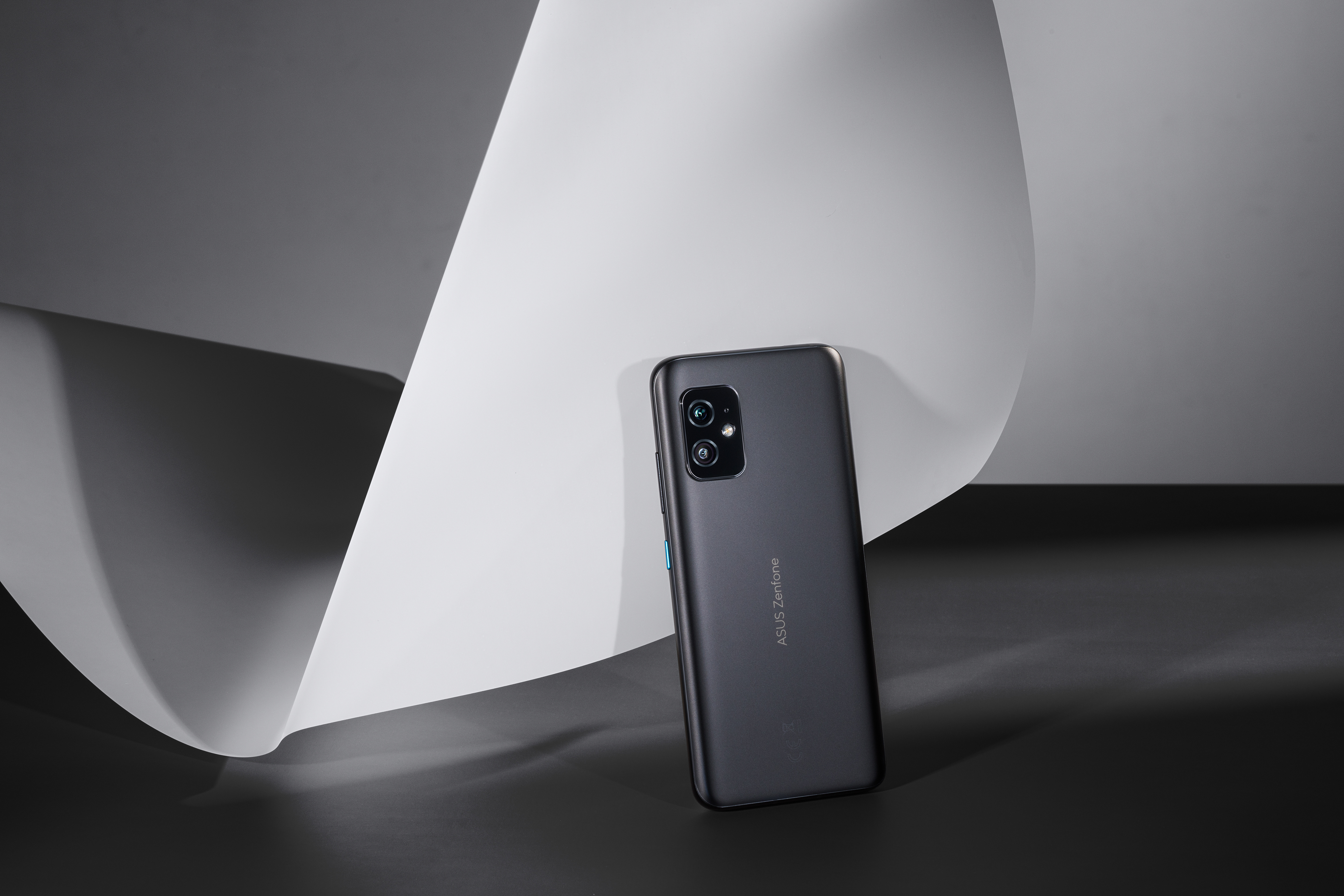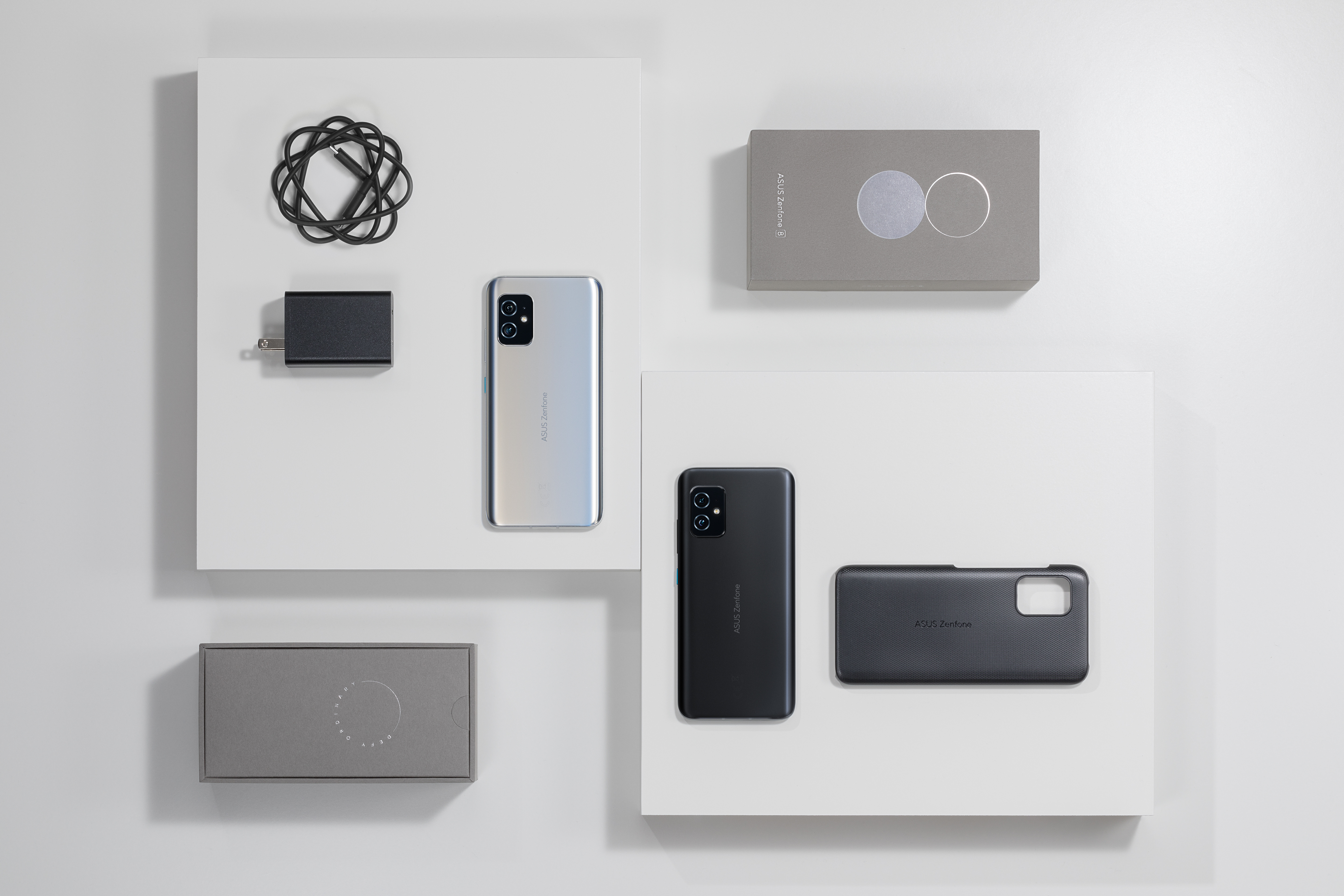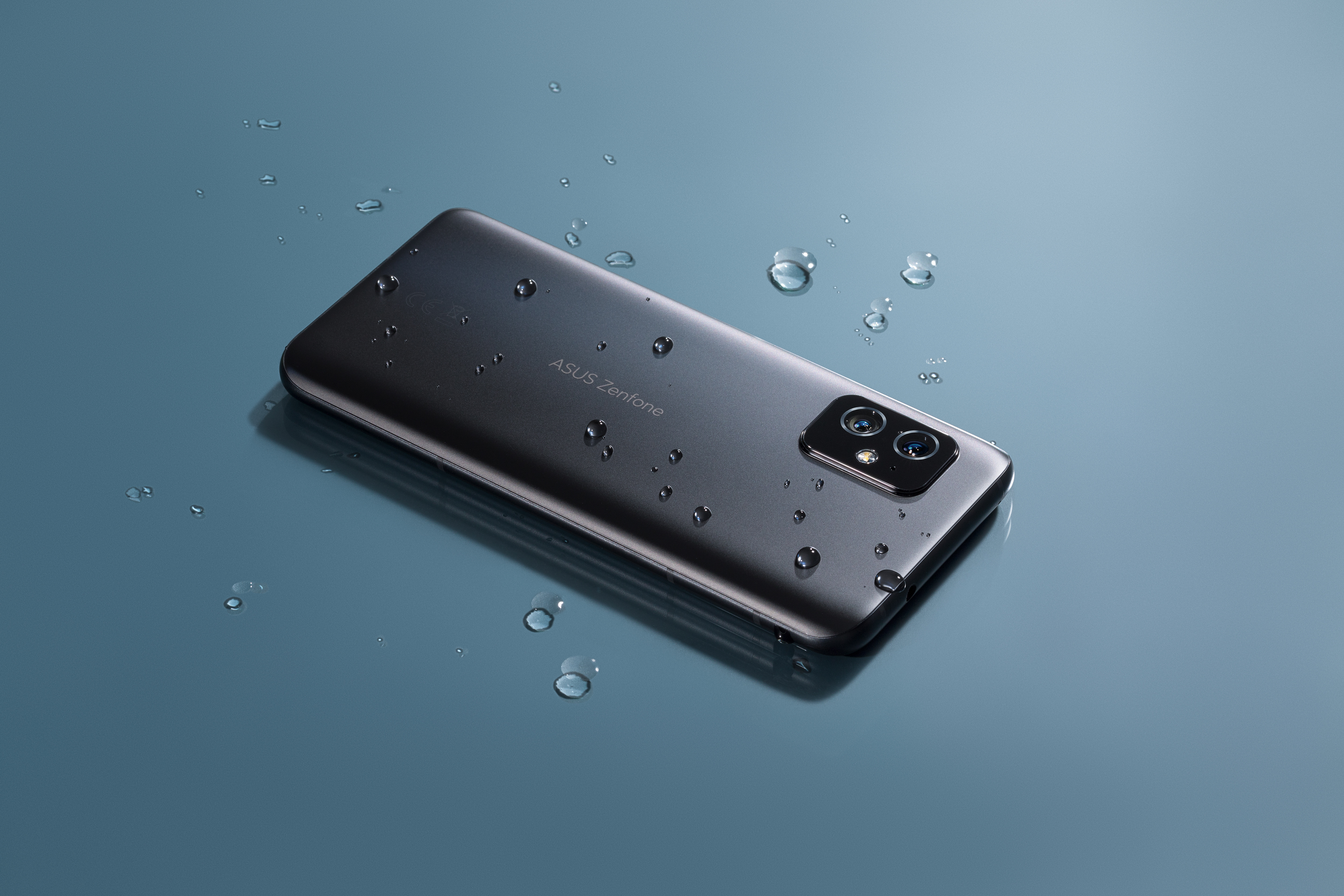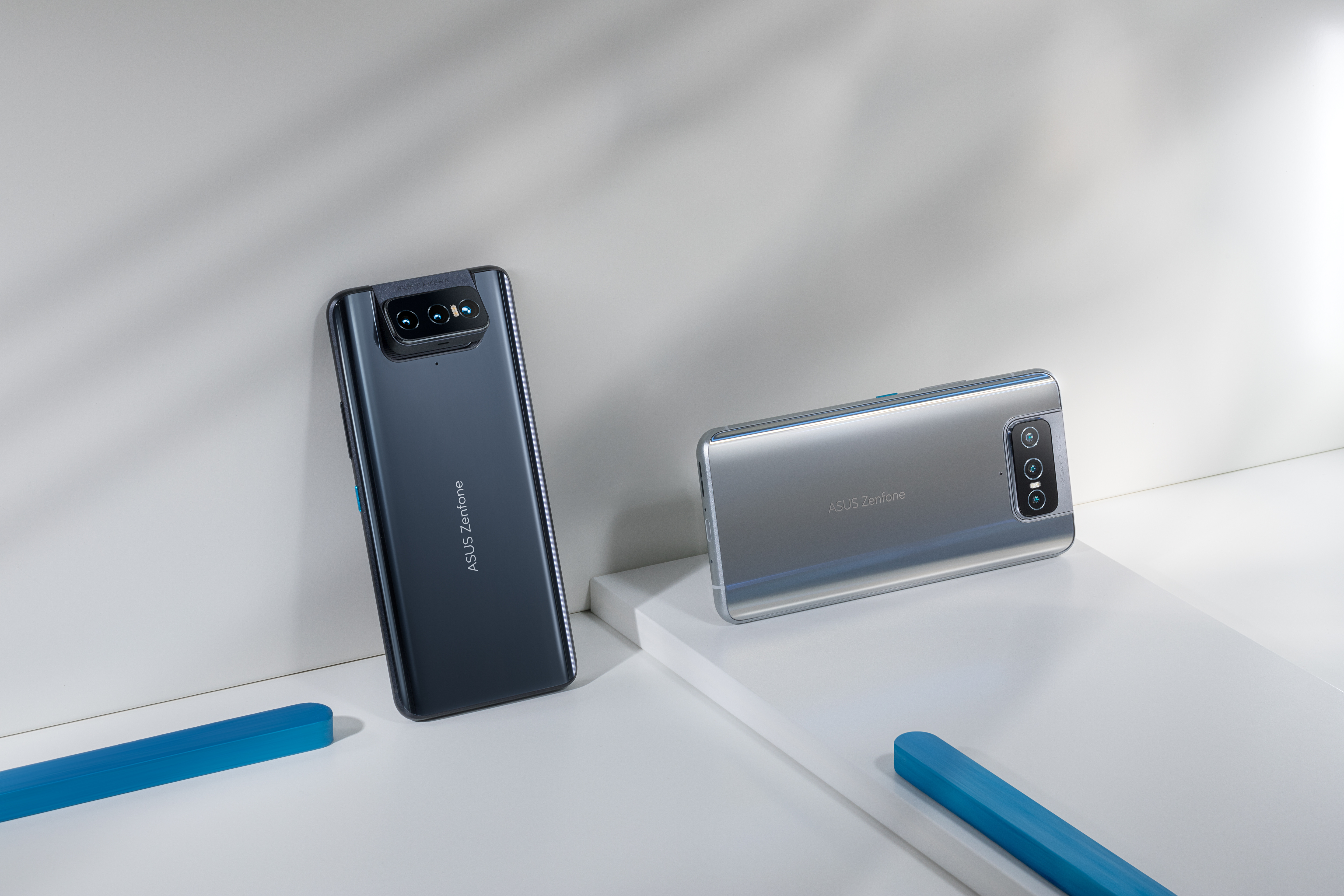These new flagship smartphones seem to be flipping towards a different direction.
Taiwanese tech giant, Asus, launched the 8th generation of their popular Zenfone line today. This came after the announcement of new laptops just the day prior. For the Zenfone 8, the brand wanted to take a different route from most other brands. They wanted to fit optimal performance, great cameras, great battery life, all in under 6 inches.
Zenfone 8
The all-new Zenfone 8 comes in at just 5.9 inches. According to Asus, 67% of users prefer smartphone screens smaller than 6 inches for better reachability of the more distal parts of the screen. They aimed to give at least 50% hand reach by keeping the device’s height less than 150mm and width under 70mm. The Zenfone 8 comes with a 3D curved glass back finish for a better hand fit.

Zenfone 8 Obsidian Black variant
The 8th generation flagship comes with a 5.9-inch AMOLED Corning Gorilla Glass Victus screen with a 20:9 aspect ratio in FHD+, 120Hz refresh rate, and 240 Hz touch sampling rate with 112% DCI-P3, Delta E<1 color accuracy and 1,000,000:1 contrast ratio. It comes packing the latest 5nm Qualcomm Processor 2.84 GHz Qualcomm Snapdragon 888 and a 64-bit Octa-core Processor running Android 11 with ZenUI 8. It comes with a Qualcomm Adreno 660 GPU with variants of 8 or 16GB LPDDR5 RAM that comes with 128 or 256 GB storage. The Zenfone 8 is powered by a 4000 mAh battery that supports Quick Charge 4.0 and PD charging. It also features an in-display fingerprint sensor, a USB-C port, and dual sim slots, each one 5G compatible. The Zenfone 8 also has an IP68 water resistance rating.

Zenfone 8 Horizon Silver (left) and Obsidian Black (right)
The Zenfone 8 packs 2 rear cameras and 1 front selfie camera. The main camera packs a Sony IMX686 64 megapixel 1/1.7”-inch sensor, an f/1.8 aperture, and 26.6mm focal length (35mm equivalent). It makes use of an on-chip-lens phase-detect AF with 4-axis optical stabilization. The secondary ultra-wide camera is a Sony IMX363 12 megapixel 1/2.55-inch dual pixel sensor with an f/2.2 opening, Dual PD AF, and real-time distortion correction with a 14.3mm equivalent focal length and has a minimum focusing distance of 4cm for close-up or macro. The front camera is a Sony IMX663 12 megapixel dual 1/2.93-inch dual-pixel sensor.

Zenfone 8 Flip

Zenfone 8 Flip Glactic Black (left) and Glacier Silver (right)
The second phone announced is what Asus calls the Zenfone 8 Flip. This is an update of their previous smartphone designs with notch-less screens and a motorized rear camera module that flips forward. It comes with a 6.67 inch FHD+ AMOLED display with Corning Gorilla Glass 6 it comes with a 90Hz refresh rate and 200Hz touch sampling time. It renders 110% DCI-P# color gamut with a Delta E rating of <1 with 1,000,000:1 contrast ratio. It packs the same 2.84 GHz Qualcomm Snapdragon 888 5nm processor and Adreno 660 GPU. It has 128 and 256 GB variants with 8GB LPDDR5 RAM. The Zenfone 8 Flip packs a 5,000 mAh battery that supports Quick Charge 4.0 and PD charging.

Zenfone 8 Flip (left) and Zenfone 8 (right)
The main camera is a Sony IMX686 64 megapixel 1/1.73-inch sensor with 26.6mm equivalent focal length, f/1.8 aperture with on-chip-lens PD AF. The secondary ultra-wide camera is a Sony IMX 363 12 megapixel 1/2.55-inch sensor with f/2.2 aperture and 14.3mm equivalent focal length. The third camera is an 8 megapixel telephoto with 80mm equivalent focal length capable of 3x optical zoom and 12x total zoom. Both phones are capable of 8K UHD (24 and 30 fps respectively) with 3-axis stabilization. Both cameras are also capable of 4K UHS time-lapse, 4K 120 fps slow motion, and simultaneous stills and video capture. The Zenfone 8 flip has an added motion tracking video capability with 4K UHD at 60fps with the use of the flipping camera mechanism.
 Both phones come with standard camera modes, night mode, Pro camera mode, 3-exposure bracketing capabilities, time-lapse, slow motion, panorama, and a manual Pro Video mode.
Both phones come with standard camera modes, night mode, Pro camera mode, 3-exposure bracketing capabilities, time-lapse, slow motion, panorama, and a manual Pro Video mode.
Availability and pricing for all variants differ per region.






